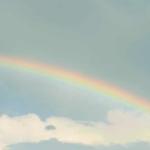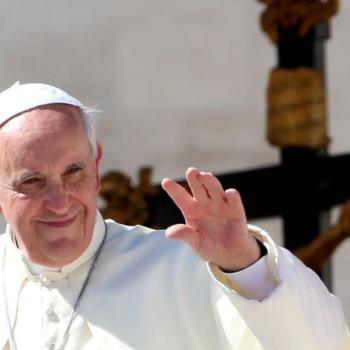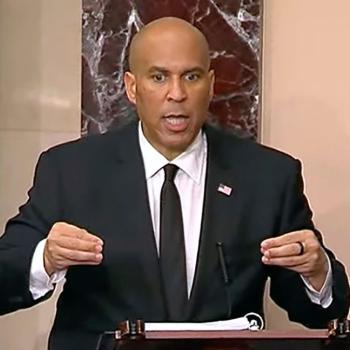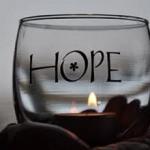Jesus’s teaching in John 12:20-33 about a seed dying in order to bear fruit can find deep resonance with Indigenous wisdom. Here are sermon ideas for Lent 5 on March 17, as well as suggestions for Holy Week and Easter.

Here are ideas for reading and preaching John 12:20-33. This is part of the EcoPreacher 1-2-3 series to equip preachers and congregations for engaging the Bible through an ecological lens. This text is assigned as part of the Revised Common Lectionary for the 5th Sunday of Lent, Year B.
Eco-Exegesis
Eco-exegesis is a method of interpreting the biblical text through a green lens using the principles of ecological theology.
24Very truly, I tell you, unless a grain of wheat falls into the earth and dies, it remains just a single grain; but if it dies, it bears much fruit. 25Those who love their life lose it, and those who hate their life in this world will keep it for eternal life. (John 12:24-25)
Seed, birth, and Indigenous wisdom
María Alejandra Andrade Vinueza wrote about Creation, spirituality, and environment grief from a Latin American perspective in a chapter for the book Words for a Dying World (Hannah Malcom, ed., SCM Press, 2020). She describes a ritual around birth among the Guna Indigenous people of Colombia and Panama that affirms each person’s connection with God, their community, and with nature. “The first ceremony of every individual is called ‘My first tree’ and is performed at birth” (42). The midwife gives the umbilical cord and placenta to the father or companion after the baby is born. They plant the cord and placenta alongside a seed that symbolizes life, such as a banana or cocoa seed.
“From that day on, every time that a member of the community passes by the tree, he/she has the responsibility to take care of it: with good words, gestures, pouring water on it. In this way, the connection of the individual with others, with nature, and with the Giver of life is expressed in very concrete ways, from the beginning of life” (42).
Vinueza laments that these kinds of Indigenous rituals are often demeaned as “barbaric,” when, in fact, they serve to cultivate a spiritual connection between humans, the environment, and the Creator. She suggests six steps for moving towards healing the damage that has been done to the Earth and people by colonial powers: 1) recognizing and naming the damage that human creatures have done; 2) giving space to address pain properly; 3) giving space for grief and lament; 4) true repentance; 5) radical change and restitution; 6) restoring forgiveness (44-45).

Guna Indigenous wisdom and rituals resonate with Jesus’s teaching in John 12:20-33.
Jesus used the metaphor of a seed “dying” to bear fruit, thus giving life through its death. His teaching at first seems paradoxical – why would anyone not “love” their life? We can think of this in terms of an unhealthy attachment to selfishness that refuses to take part in the reciprocity of the natural world, the give and take of community. A seed that is kept out of the processes of life cannot germinate, grow, and provide life to others. Similarly, when humans focus only on their own wants and needs instead of how they may give of themselves in community, they bear no fruit for others.
One of the ways we can give of ourselves is to ensure that the soil, water, and air in which we all live and grow is as healthy as possible.
A Creation-shaped Holy Week discipline could include Vinueza’s steps toward healing. In our worship rituals of Maundy Thursday and Good Friday, we can recognize and name the damage that we have done to God’s Creation. We can give space to address the pain experienced by people, animals, communities, and Earth itself, allowing them to voice their grief and lament.
This could lead to a litany of repentance, turning away from our current destructive practices toward those that are life-giving. The Saturday Vigil service could include a commitment to actions that would spark radical change and restitution within the church’s practices and individual lives. Then, on Easter Sunday celebrating the Resurrection of Jesus, the sermon could remind the congregation of the promise of forgiveness and new life that comes from this process of dying and rebirth.
Living seed, living soils
As Indian ecofeminist and activist Vandana Shiva has said, “Living seed and living soils are the foundations of living and lasting societies of sustainability, justice and peace,” (Earth Democracy: Justice, Sustainability, and Peace, London: Zed Books, 2009). Thus, serving God means serving the seeds and soil, the ecosystems and bioregions, the people, birds, animals, fish, insects, plants, and trees that bear fruit on this wondrous and fragile planet.
1 Eco-Idea
The Eco-Idea is one succinct statement that tells us who God is and/or what God does in relation to Creation and how we should respond as people of faith.
As Jesus calls his followers to give of themselves like a seed giving itself over to the community of life, we follow this call to give of ourselves, heal the wounds of our planet, and ensure its flourishing.

2 Eco-Questions
Eco-Questions are what we can ask to help a congregation draw out the implications of the Eco-Exegesis and Eco-Idea.
- In what ways does your congregation give space for lament, grief, and expressions of pain about the loss and damage in God’s Creation? Can you create more intentional opportunities for naming our structural and social sin, either through silence, prayers, confessions, art, or music?
- What are examples of deep conversion of behaviors, attitudes, and lifestyles that you can point to in your sermon? What are sustainable changes you’ve seen happen in communities over time that can provide a model or blueprint for your congregation?
3 Eco-Actions
Eco-Actions are ways that a congregation might respond to the Eco-Idea and Eco-Questions. One of these possibilities may have salience for your ministry context.
- Plan to integrate Earth laments and themes into your Holy Week services. Consider how Creation suffers alongside Jesus during the crucifixion and continues to suffer today.
- Design an Ecological Stations of the Cross for Holy Week. Download this free EcoPreacher resource here.
- For Easter Sunday, go beyond lilies and butterflies as symbols of new life and resurrection. Draw on Indigenous examples and stories such as Vinueza’s description above of the Guna people’s new birth and seed ritual. See especially the chapters in Part 3 of Words for a Dying World, “As It Will Be,” for profound essays about reconciliation and faithfulness in times of grief and despair.
Read also:
Ecological Stations of the Cross, 2023
Easter, April Fools, and God’s Laughter
Touching the Wounds of Our Planet: Thomas and Our Eco-Spiritual Crisis
EcoPreacher 1-2-3 is a partnership between the Rev. Dr. Leah Schade and the Interfaith Center for Sustainable Development, publishers of Eco Bible, a Jewish ecological commentary on the Hebrew Scriptures. EcoPreacher 1-2-3 provides Creation-centered sermon preparation that is short, accessible, and based on a solid biblical foundation. To see other EcoPreacher ideas and to sign up to receive future EcoPreacher 1-2-3 installments, click here.

The Rev. Dr. Leah D. Schade is the Associate Professor of Preaching and Worship at Lexington Theological Seminary in Kentucky and ordained in the ELCA. Dr. Schade does not speak for LTS or the ELCA; her opinions are her own. She is the author of Preaching in the Purple Zone: Ministry in the Red-Blue Divide (Rowman & Littlefield, 2019) and Creation-Crisis Preaching: Ecology, Theology, and the Pulpit (Chalice Press, 2015). She is the co-editor of Rooted and Rising: Voices of Courage in a Time of Climate Crisis (Rowman & Littlefield, 2019). Her newest book is Introduction to Preaching: Scripture, Theology, and Sermon Preparation, co-authored with Jerry L. Sumney and Emily Askew (Rowman & Littlefield, 2023).













